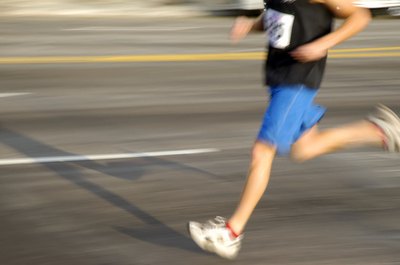
Overview
Endorphins are opiate-like chemicals that produce feelings of euphoria and calmness in response to external stimuli like pain, excitement and physical exertion. Serotonin, the neurotransmitter implicated in mental disorders like depression, serves a similar purpose, affecting mood, sleep patterns and appetite. There are many natural ways to increase serotonin and endorphin production, many of which involve simple everyday lifestyle factors like diet and exercise.
Diet and Nutrition
Food is the fuel source needed for every action of our minds and bodies. The foods we eat influence physical health as well as brain functions like mood and cognition. Certain substances are required for the production of serotonin in the body. The serotonin precursor L-tryptophan can be found in a variety of foods, such as milk, turkey, soy and other high-protein foods. It can also be taken in supplement form as 5-hydroxytryptophan, or 5-HTP, and is more likely to increase actual serotonin levels when taken in this way.
According to a study by Felice Jacka featured in the January 4, 2010 edition of “The American Journal of Psychiatry,” women eating a healthy diet rich in vegetables, fruits and healthy fats were half as likely to experience anxiety and depression as those eating a typical American diet of processed and fatty foods, reinforcing the role of diet in mood and wellbeing.
According to a study by Felice Jacka featured in the January 4, 2010 edition of “The American Journal of Psychiatry,” women eating a healthy diet rich in vegetables, fruits and healthy fats were half as likely to experience anxiety and depression as those eating a typical American diet of processed and fatty foods, reinforcing the role of diet in mood and wellbeing.
Exercise
It has long been known that exercise increases the levels of endorphins in the blood, though these endorphins do not cross the blood-brain barrier to affect mood. According to The New York Times, long-distance running also triggers the release of endorphins in the brain. While the role of this response is not completely understood, it is believed that the body produces endorphins to help fight pain and fatigue, making it possible to continue in spite of physical discomfort.
Intense cardiovascular, weight-bearing and stretching workouts lasting 30 to 45 minutes are most likely to have a positive impact on endorphin production and physical fitness.
Intense cardiovascular, weight-bearing and stretching workouts lasting 30 to 45 minutes are most likely to have a positive impact on endorphin production and physical fitness.
Sunlight
As the source of energy and life for all living things, the sun plays a vital role in every function of the mind and body. In humans, it provides essential vitamin D, which is needed for proper immune function, bone growth and calcium absorption. While too much sun exposure can cause skin damage, too little can lead to other problems like vitamin D deficiency and depressive disorders.
Seasonal affective disorder (SAD) is a form of depression caused by lack of natural sunlight during the winter months. The sun can have an impact on other forms of depression as well. A study by R.W. Lam and colleagues appearing in the June 30, 1999, issue of “Psychiatry Research” states that exposure to bright white light can effectively ease symptoms of nonseasonal forms of depression, such as PMDD, or premenstrual dysphoric disorder.
According to a study by Nicole Praschak-Rieder, MD, featured in the September 2008 issue of the Archives of General Psychiatry, lack of sunlight in the fall and winter months causes an increase in endogenous transporters that inhibits serotonin in the brain, explaining in part why depression, fatigue and lethargy are more common during colder seasons.
www.livestrong.comSeasonal affective disorder (SAD) is a form of depression caused by lack of natural sunlight during the winter months. The sun can have an impact on other forms of depression as well. A study by R.W. Lam and colleagues appearing in the June 30, 1999, issue of “Psychiatry Research” states that exposure to bright white light can effectively ease symptoms of nonseasonal forms of depression, such as PMDD, or premenstrual dysphoric disorder.
According to a study by Nicole Praschak-Rieder, MD, featured in the September 2008 issue of the Archives of General Psychiatry, lack of sunlight in the fall and winter months causes an increase in endogenous transporters that inhibits serotonin in the brain, explaining in part why depression, fatigue and lethargy are more common during colder seasons.





No comments:
Post a Comment